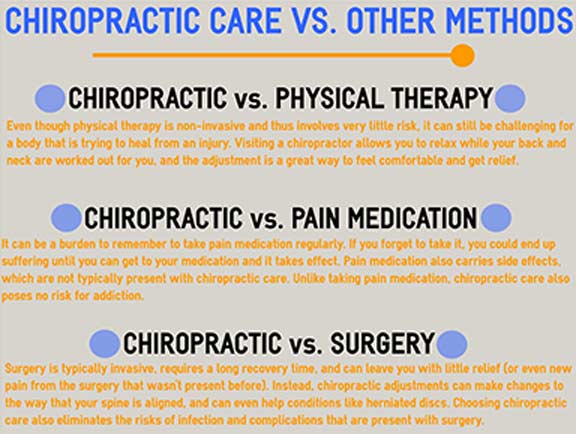The Role Of Stance In Pain In The Back: Tips For Getting And Maintaining Good Placement Throughout Your Day
The Role Of Stance In Pain In The Back: Tips For Getting And Maintaining Good Placement Throughout Your Day
Blog Article
Written By-Ibrahim Rollins
Keeping correct stance isn't practically staying up straight; it has to do with straightening your body in a manner that supports your back and reduces the threat of pain in the back. The way you rest, stand, and relocate throughout the day can considerably influence your spinal wellness. Yet just how precisely can you make certain good placement continually, also throughout busy days loaded with different tasks? Allow's dive deeper into the refined yet impactful changes you can make to your daily routine to maintain your back happy and healthy.
Significance of Proper Stance
Appropriate pose is critical in maintaining a healthy back and preventing discomfort. When you sit or stand with excellent posture, your spinal column remains in alignment, minimizing stress on your muscles, ligaments, and joints. This positioning allows the body to disperse weight equally, preventing excessive tension on certain locations that can cause discomfort and pain. By keeping your back properly straightened, you can likewise boost your breathing and food digestion, as slouching can compress body organs and limit their capability.
Furthermore, preserving great pose can boost your general look and positive self-image. When you stand tall with your shoulders back and head held high, you show confidence and appear even more approachable. Excellent position can also make you really feel extra stimulated and sharp, as it promotes appropriate blood circulation and permits your muscle mass to function effectively.
Integrating appropriate posture right into your everyday routine, whether resting at a workdesk, walking, or exercising, is important for stopping neck and back pain and advertising total wellness. Remember, a small modification in just how you hold yourself can make a significant difference in how you really feel and function throughout the day.
Common Postural Mistakes
When it involves preserving great position, many people unwittingly make usual blunders that can contribute to back pain and pain. One of the most prevalent errors is slouching or stooping over while resting or standing. This position places excessive pressure on the back and can bring about muscle discrepancies and discomfort in the long run.
An additional common blunder is overarching the lower back, which can flatten the natural curve of the spinal column and cause pain. In addition, crossing legs while sitting might really feel comfortable, however it can develop a discrepancy in the hips and hips, resulting in postural issues.
Utilizing a pillow that's too soft or as well solid while sleeping can also impact your placement and add to neck and back pain. https://fernandoidxsn.newsbloger.com/31758411/deciphering-the-concealed-realities-to-a-pain-free-existence-exploring-the-role-of-chiropractors but not least, regularly craning your neck to consider screens or readjusting your setting regularly can strain the neck and shoulders. Bearing in mind these common postural blunders can aid you maintain better positioning and reduce the threat of back pain.
Tips for Correcting Placement
To enhance your alignment and decrease back pain, it's important to concentrate on making small adjustments throughout your everyday routine. Begin by bearing in mind your position. When sitting, ensure https://www.verywellhealth.com/sciatica-exercise-herniated-disc-296822 are level on the floor, your back is straight, and your shoulders are relaxed. Prevent slouching or leaning to one side. Use ergonomic chairs or paddings to support your reduced back.
When standing, distribute your weight equally on both feet, maintain your knees slightly bent, and embed your hips. Engage your core muscular tissues to support your back. Take breaks to extend and walk if you have a sedentary task. Integrate workouts that enhance your core and back muscles, such as planks or bridges.
While sleeping, make use of a pillow that supports the natural contour of your neck to keep proper spinal positioning. Prevent sleeping on your belly, as it can stress your neck and back. By bearing in mind these suggestions and making small changes, you can progressively correct your positioning and relieve back pain.
Conclusion
Keep in mind, keeping good stance is essential to avoid pain in the back and promoting back health and wellness. By being mindful of your positioning, dispersing weight uniformly, and engaging your core muscle mass, you can decrease strain on your back and lessen the danger of discomfort and injury. Incorporate ergonomic assistance, take normal breaks to extend, and reinforce your core and back muscle mass to keep proper positioning throughout the day. Your back will certainly thanks for it!
